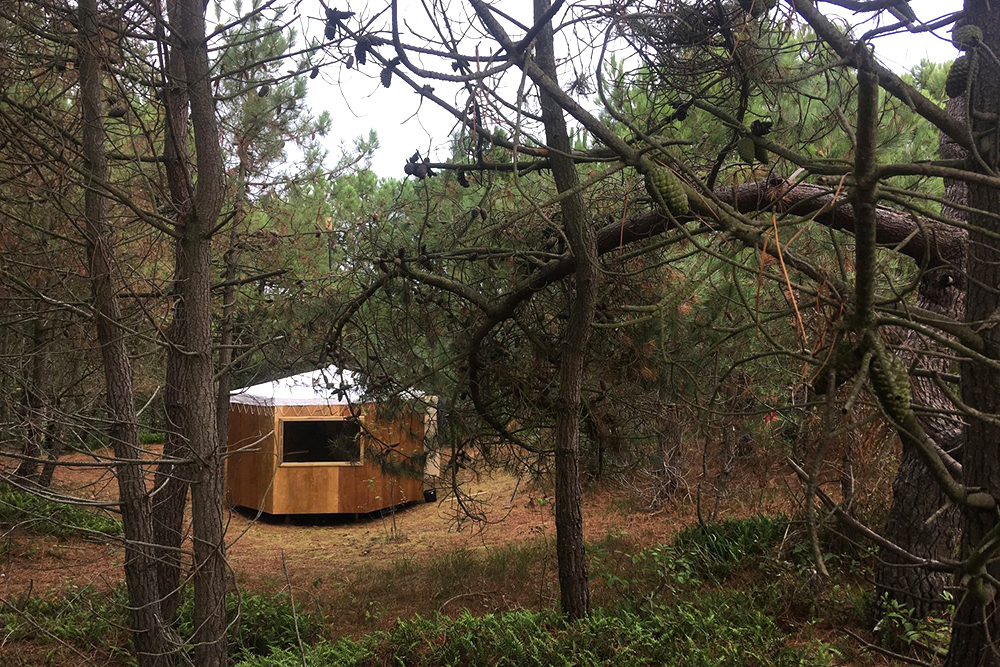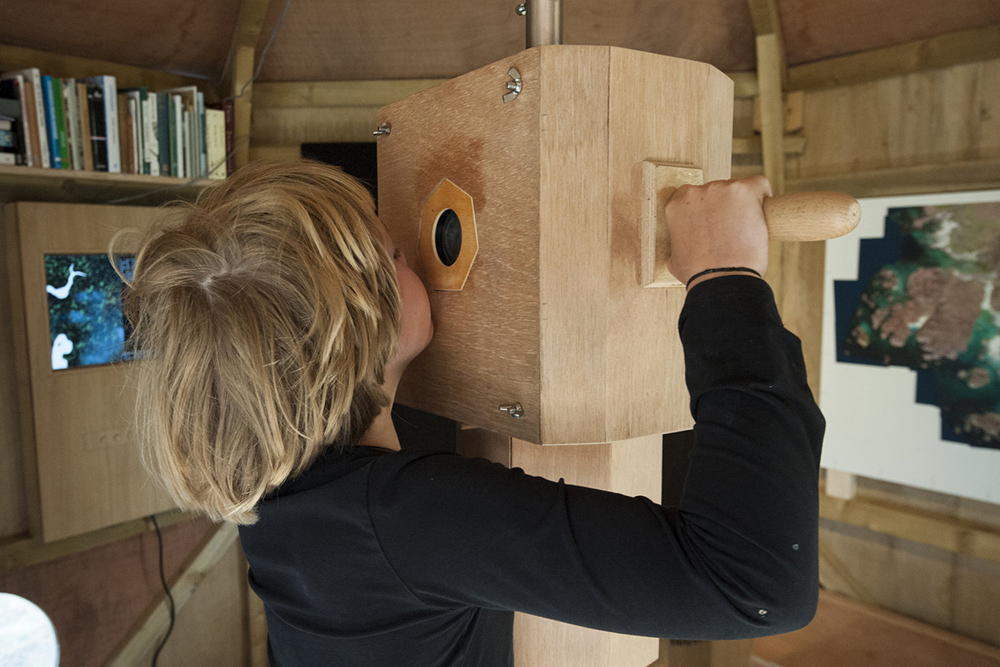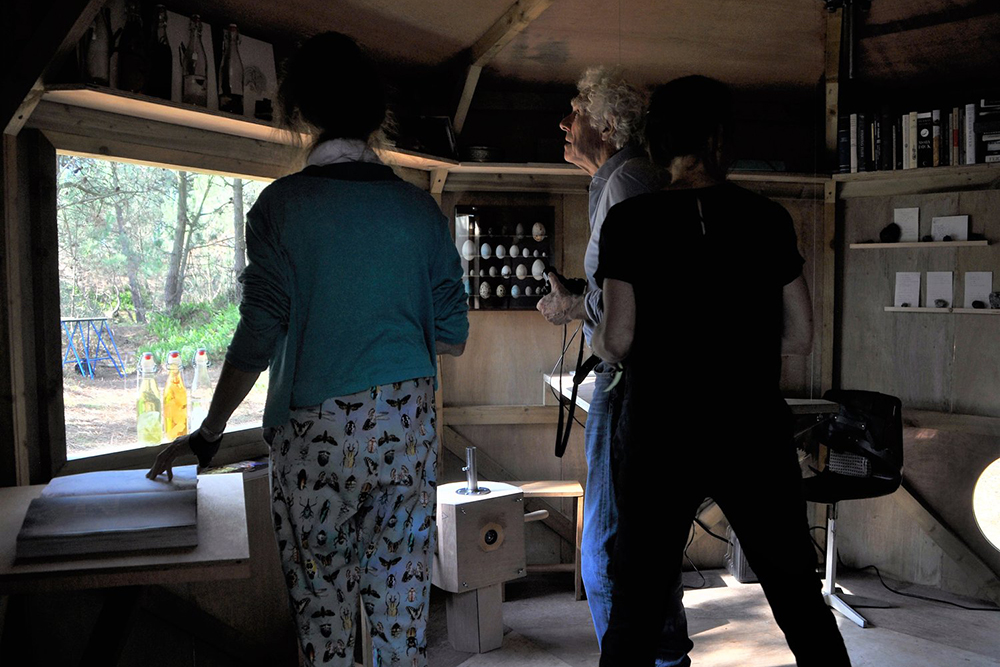Into The Great Wide Open (ITGWO )
How can a landscape, looked at through different eyes, and mapped out in a polyphonic and sensory way, grant new insights and outlooks, generate stories and offer possibilities for a more sustainable relationship between humans and their habitat?
This question was the starting point for the installation Knockvologan Observatory which we build for the ITGWO festival on Dutch Island Vlieland.
Knockvologan Observatory is a mobile observation post which was installed on a sand dune hidden between trees. It is a coastal weather proof work and exhibition space which, after it was shipped back to Scotland, was transformed into our guest studio, winter garden, bird observation hut and seaweed laboratory. In and around the observatory we’ve shown a collection of works and try-outs which were developed during our first two years in Knockvologan. These works and experiments are direct results from the issues, opportunities, material and resistance that the rugged Scottish coastal landscape offers. The collection comprised work of our own and of several collaborative projects we’ve initiated in the same period. For us collaborations are very important. They generate new input, other ways of seeing and form bridges to the main land which is important when living and working on an Island in such a remote area.
The collaborations for ITGWO.
• Jewellery designer Sae Honda works as an artist in residence at the observatory during ITGWO. “Modernology" (kōgengaku) is a term coined by Japanese architect, designer and educator, Wajiro Kon (1888-1973). Contrary to how archaeology explore the layers of past, ‘modernology’ provides a method for the scientific analysis of material culture in modern society. On Vlieland, Sae conducted a kind of ‘modernology' studies by exploring the very top layer of the landscape. She collected plastic rubbish and natural materials surrounding it such as twigs and shells and melted these together into unique, local artificial ‘rocks’. These were then refined by cutting and polishing. Each rock captures a mundane moment at a random location on the island.
• In the middle of the observatory there is a periscope with which the wide surroundings can be observed via the viewer on the roof. The recognizable set up makes people expect to see the landscape of Vlieland but this is not the case. Inside of the periscope Lotje van Lieshout build an imaginary landscape based on her observations in Scotland. A blend of old school special effects and up to date 3D rendering results in a fantastic world of make believe.
• Anthropologist Rebecca Bego collected the numerous sounds of the Scottish landscape. These field recordings serve as the backdrop for "Knockvologan (or: an anthropology of almost no people)”, her audio story about human presence in a nature reserve on the very edge of this continent. What can the landscape itself tell us?
• Can the surface of an island consisting of former agricultural fields, granite rocks and a turbulent sea be translated into a fabric? Textile artist Severine Amsing designed a blanket that tries to capture the tide.
• A system with unpredictable behaviors can arise from the interaction between simple rules. In Unsettled Perceptions, the digital translation of Tireragan, built by programmer Richard van Diessen, the elements from this area and the words describing the terrain each have their own life form, which can freely propagate over land from the original location.
• In the spring of 2017, bookbinder Sandra Merten and Miek Zwamborn identified 26 species of foraging birds around Knockvologan. The display case shows replicas of eggs that are hatched every year in the area. Some of these eggs figure in the CNP III publication Oology.












